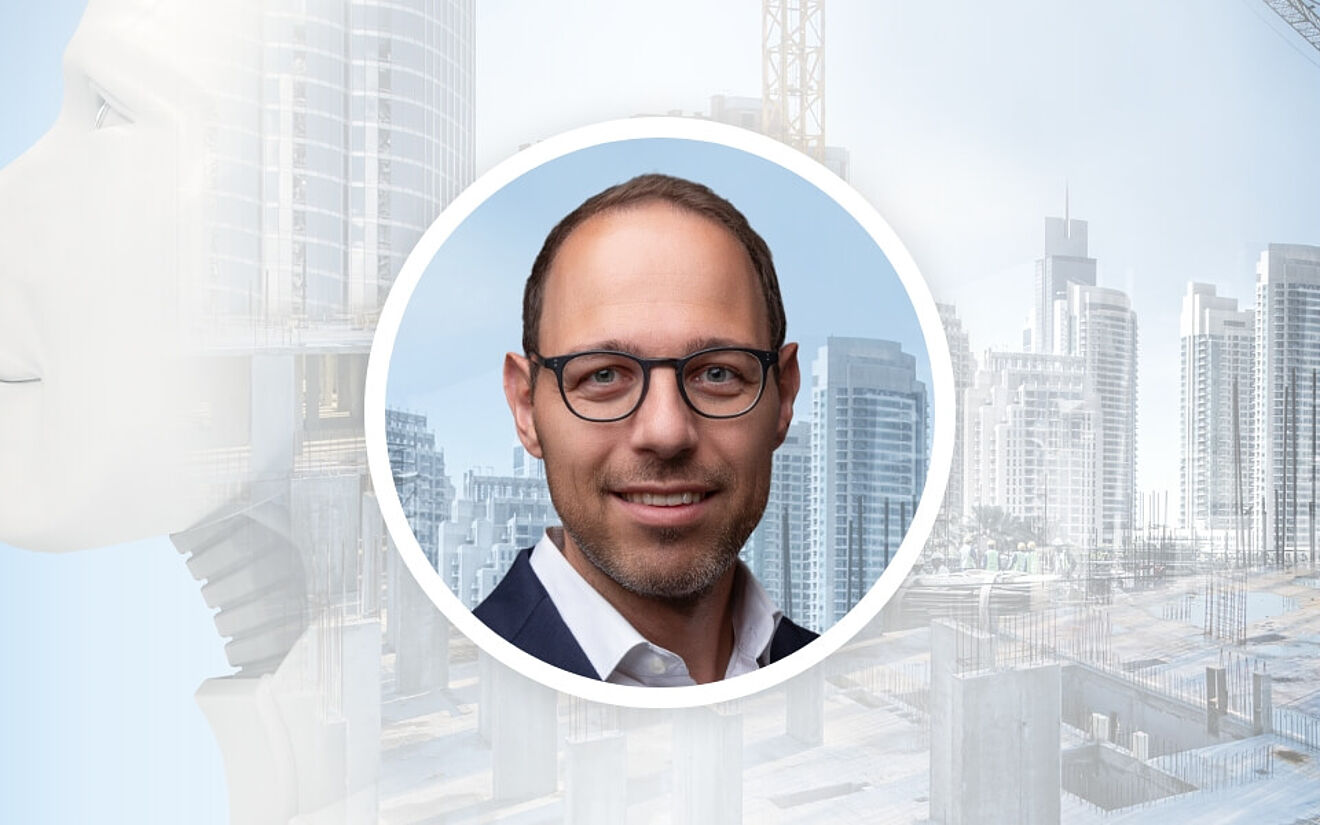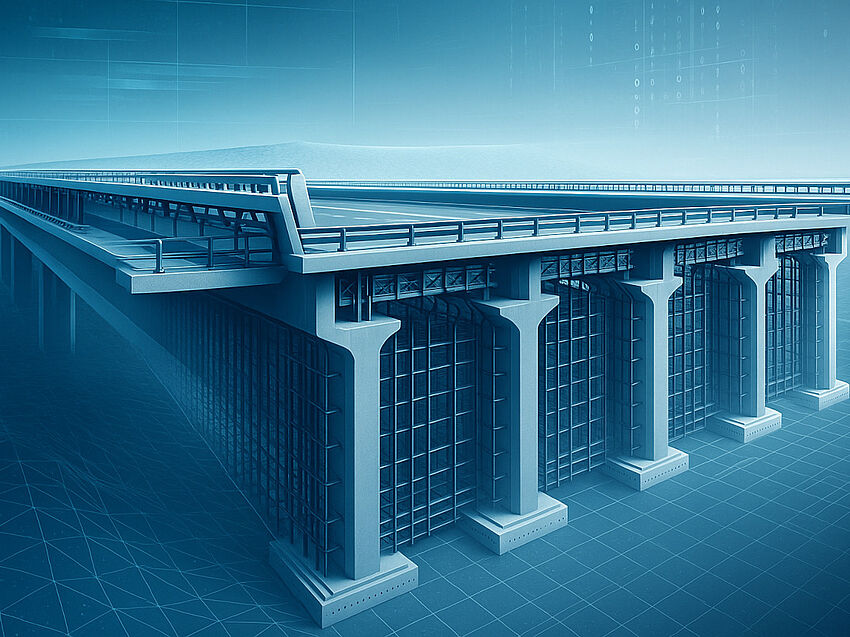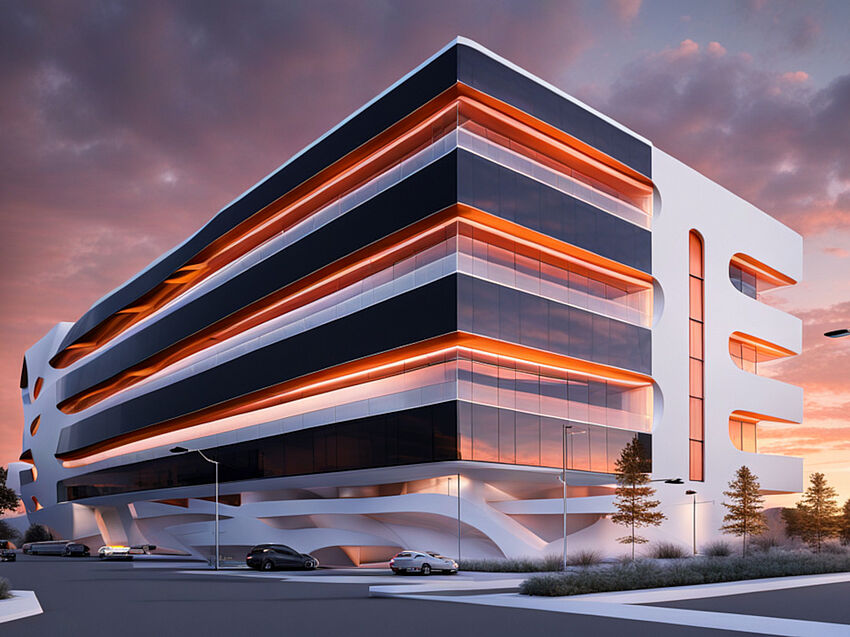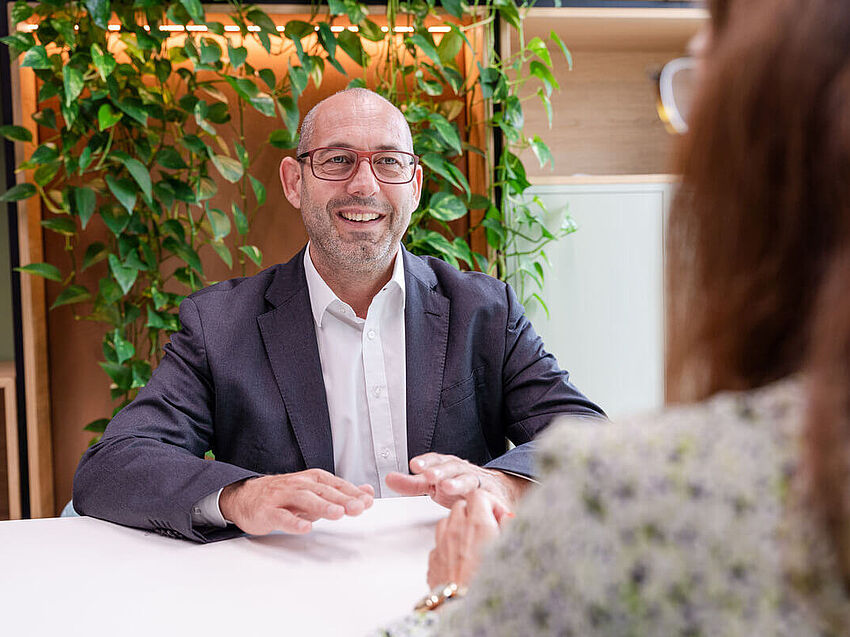Where’s the AI for Engineers? Practical Tools and Applications
According to AI expert Julian Geiger, we are on the brink of a technological revolution that could lead to a hundredfold increase in quality in the construction industry – with people at the center.
Artificial intelligence is on everyone’s lips. But what exactly is AI, what makes it so special, and how will it manage to transform the construction industry into a data-driven industry in the coming years? The Nemetschek Group – of which ALLPLAN is a part – is actively addressing these questions and already has some exciting answers. At a recent ALLPLAN online event on AI in infrastructure construction, Julian Geiger, Vice President and Head of AI at the Nemetschek Group, provided insights into the company’s AI strategy, which could radically improve construction in the future. Yet ultimately, people remain at the center of this transformation.
Six Capabilities of Large Language Models
Julian Geiger is certain: “We are at the threshold of a completely new era – and this era is likely to be the greatest, most important, and also the most consequential in all of human history.” The defining force of this age is the discovery of non-human intelligence. The breakthrough that has fueled the rapid developments of recent years and months came with the rise of large foundation models, or Large Language Models. These are based on the realization that neural networks develop astonishing capabilities when scaled up – namely:
1. Deep semantic understanding: AI doesn’t just understand simple words, it can grasp deeper meaning from complex contexts.
2. Complex reasoning: AI can solve demanding problems and work through complex interconnections step by step.
3. Generalization: AI can transfer what it has learned in one context and apply it to new situations.
4. Multimodality: Text, audio, video, images, and sensor data can all be combined in a single AI model. This richer “perception” of the world significantly improves performance.
5. Theory of Mind: AI is increasingly able to anticipate and interpret the emotions and thoughts of others.
6. Goal pursuit: AI can increasingly break down complex goals into tasks, carry them out, and verify whether the result is correct.
AI at Nemetschek: Not an End in Itself
What becomes especially exciting, according to Geiger, is when these six capabilities are combined in future AI models. However, AI is not an end in itself. Nemetschek’s guiding principle for the technology is therefore to make creativity more creative, and productivity more productive. “We always integrate AI in a targeted way to help our users become better at what they do,” he emphasizes. In solutions like ALLPLAN, this improvement spans five areas:
1. Creativity: Generative design supports ideation, visualization of structures, and creation of concept designs.
2. Automation: Tedious routine tasks, such as basic documentation or repetitive actions, are eliminated.
3. Problem avoidance: AI detects problems early, avoiding costly rework that could otherwise affect the entire value chain.
4. Expertise for all: Handling complex expert tools is greatly simplified through AI-powered assistants, making niche functions much faster and easier to access.
5. Sustainability: AI enables integrated sustainability optimization during the design phase, so that sustainability is considered from the start without impairing the building’s function.
A Hundredfold Increase in Quality at Every Level
Geiger sees enormous potential for AI in construction. Currently, there is a lack of quality in design, engineering, functionality, and building operations. In his words, there’s a lack of capacity for excellence. “Imagine if tomorrow the world were different, and every building was carefully designed by outstanding architects, outfitted by the most talented interior designers, optimized for comfort and sustainability by the best engineers, and landscaped by top landscape architects,” says the technology expert. This utopia could become reality: “The future of construction, in my view, is not AI-driven mass production, but a hundredfold increase in quality at every level – made possible through the combination of AI and human intelligence.”
Humans at the Center of the AI Transformation
At the heart of this transformation is not AI, but humans. Rather than replacing us, artificial intelligence is intended to take our creativity and productivity to the next level. To support this vision, the Nemetschek Group has defined six commitments to its users:
1. Data protection and security: By separating customer, software, and general industry data (training data), customers always retain full ownership of their work.
2. Robustness and reliability: AI is always integrated into workflows in a way that is safe and truly helpful.
3. Responsibility and governance: The Nemetschek Group is establishing structures to uphold its self-imposed commitments.
4. Transparency: Nemetschek discloses where AI is used and how its results are generated.
5. Sustainability and society: Nemetschek uses AI as a lever to enhance sustainability and human well-being.
6. Shaping change: Nemetschek invests in education and partnerships with customers to further develop products and drive the AI transformation.
Preparing Now for the AI Revolution
The rapid transformation of the construction industry through AI may cause discomfort for some. That’s why Geiger encourages industry professionals to begin preparing for the future now – by trying out existing AI tools, experimenting with them, and discovering their potential and limitations for themselves.




